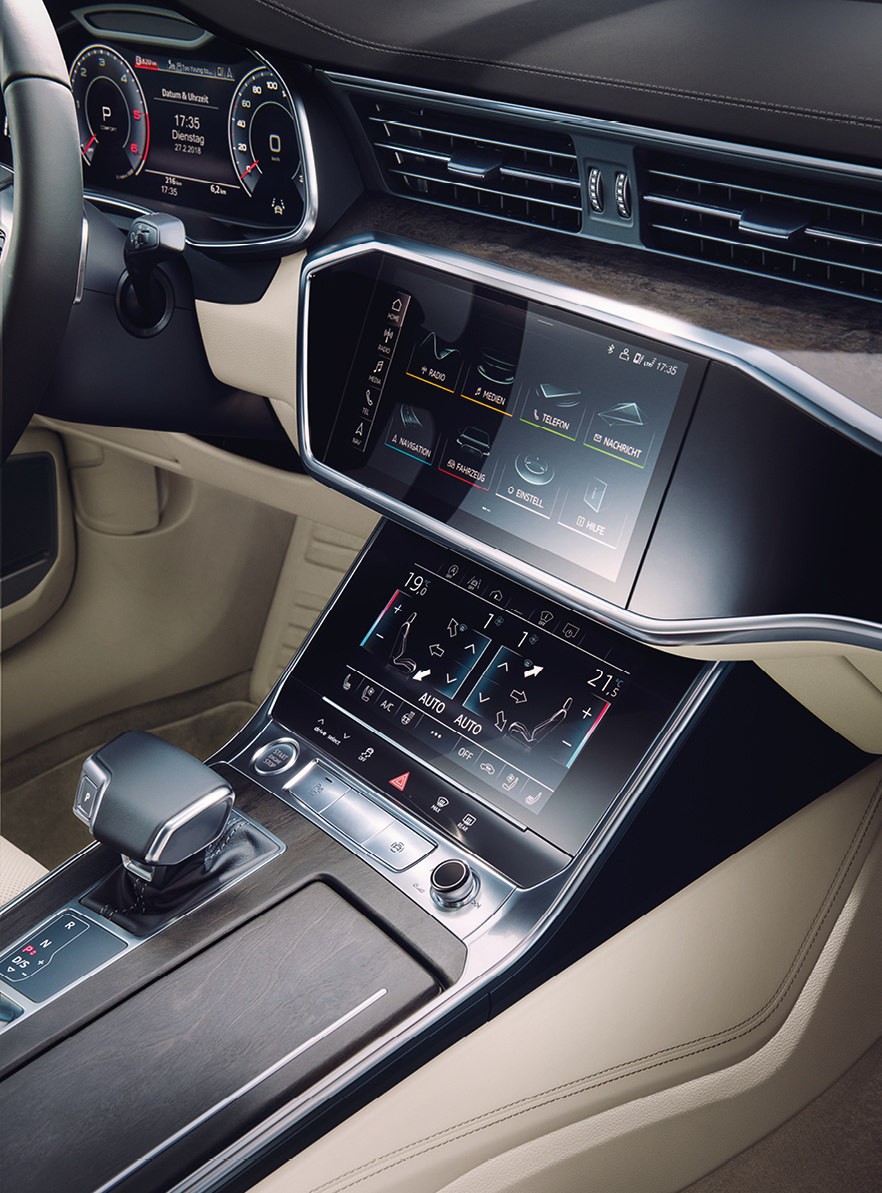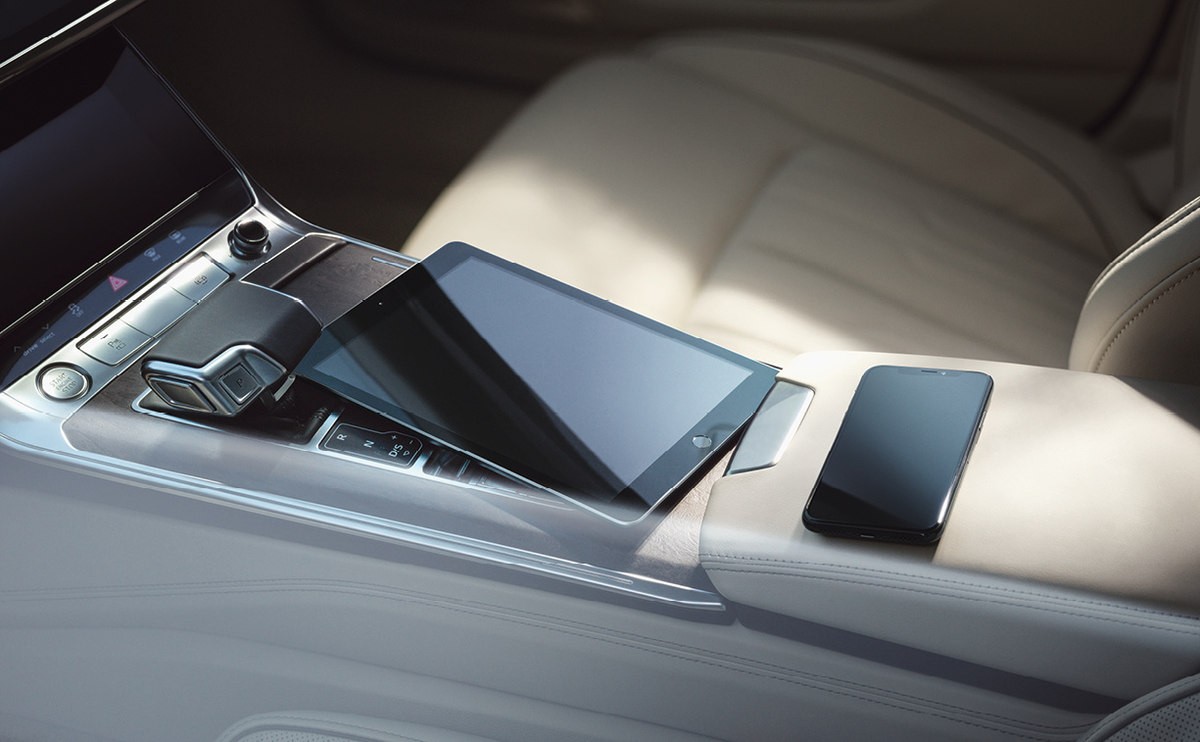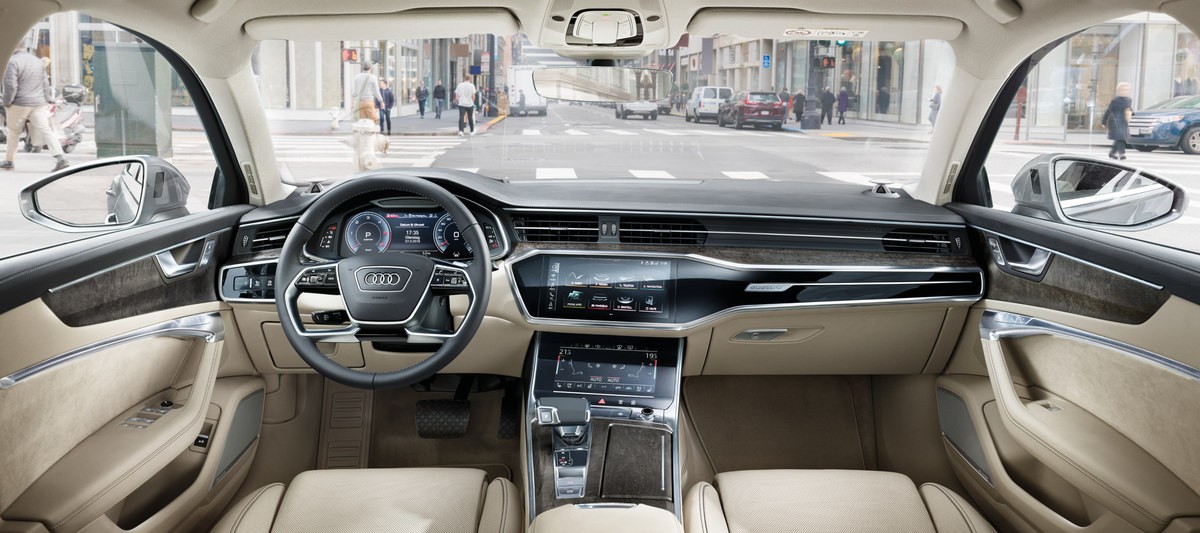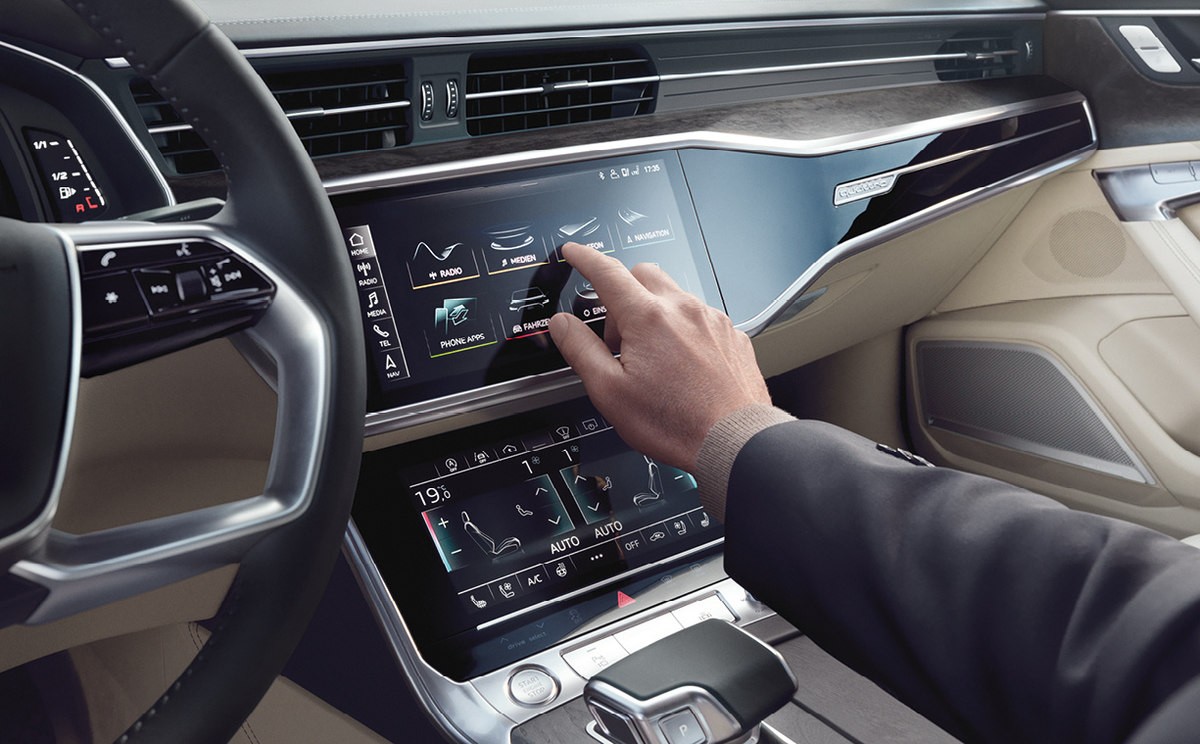
Modern touch
The MMI touch response operating system in the new Audi A6 uses sensory stimuli to optimize human-machine interactions. Haptic, acoustic and visual responses on the two central touchscreens take operation to a whole new level.
Birte Mußmann (copy) & AUDI AG (photos)


State-of-the-art operating concepts are all about digitalization and, despite the highly complex technology behind them, aim for a minimalist look. Touchscreens have become a key factor in achieving that. They certainly are in the MMI touch response operating system integrated into the new Audi A6*. With this generation, rotary/push-button controls are (mostly) a thing of the past—making this sedan the latest to embrace the progressive concept that has already found its way into the interiors of the new Audi A8 and the new Audi A7. The top screen, which sports a 10.1-inch display when equipped with the optional MMI Navigation plus, lets the driver or passenger manage the infotainment system. Below it, a second, 8.6-inch display on the center console is used to regulate cabin temperature along with other car and comfort functions. The lower screen can also be used to enter text, either with handwriting recognition or an overlay keyboard. All the components are arranged ergonomically so as to optimize comfort and convenience, especially for the driver.

“Configuration and customization are key watchwords for the operating concept in the new Audi A6. The upper screen, for example, now features shortcuts on the left-hand side—which used to be hard switches set in a fixed position down on the center console. With the new configuration, we aim to provide the fastest possible access to the main functions. The touch display also offers the option of customization—it’s completely up to the driver.”
Carolin Köberle, display and control concept, AUDI AG
The functions, too, are designed with ease of use in mind: Controlled by touch and swipe gestures, the MMI touch response technology is as intuitive as a smartphone. Responses are indicated with haptic, visual and acoustic signals. Merely touching the display glass lightly will not activate a function; to do this, the user must gently exert a defined pressure. Confirmation is provided by a stimulus on the fingertip, which is accompanied by a clicking sound. How does the display respond to pressure this way? An electromagnet gives it a slight lateral shift to create the haptic reaction. Lasting mere milliseconds, this shift changes the display’s position by just 0.08 millimeter. The display’s sensitivity can be set to the driver’s choice of three levels—or suppressed altogether.


“As soon as the haptic feature is activated, a simple touch is no longer sufficient to select functions. Gentle pressure must be applied. This creates a click–a combination of a haptic and an acoustic response. The idea behind it is that the system is usually accessed while driving. We want users to be safe in the knowledge that they cannot activate the wrong function by accident. They must be able to make targeted selections and receive confirmation without looking.”
Carolin Köberle

In addition, the digital operating system allows operating elements of central vehicle functions to be placed in the desired position on the MMI screen using drag-and-drop. Similar to smartphone apps, many icons come with long-touch or long-push functions. For example, to insert a new tile in the main menu, the driver need only press it for just under a second; then a brief vibration occurs and the tile can be moved. The touch of a finger changes the icon’s color slightly; pressing harder intensifies the color change. Shortcuts and favorites enhance customization options and convenience further still.
Whether haptic, acoustic or visual, the chief benefit of these responses is to improve ease of use for the driver—who, of course, needs to concentrate on the road. Thanks to its sensitivity and sensory stimuli, the MMI touch response operating concept sets a new benchmark, taking touchscreen technology to a whole new level.
Natural language voice control: The new Audi A6 can be optionally equipped with an innovative feature based on natural voice recognition. That means the driver can interact with the system with virtually unlimited freedom. When necessary, the system asks questions, allows corrections and additions, and offers choices. In dialogue with the voice control system, the driver can switch between different menu areas—for example, to call a contact from the phone book and then use the associated address as a navigation destination. The voice control system responds to commands and questions in two ways: from the information stored on-board about preferred destinations and media or from the cloud**.

*The Audi A6 sedan is scheduled to launch on the European markets in June 2018. The Audi A6 Avant is to follow in September 2018.
** This service may incur additional charges.
Further information on the official fuel consumption and specific CO2 emissions figures for new passenger cars can be found in the Guideline for Fuel Consumption, CO2 Emissions and Electric Power Consumption, which is available free of charge at all car dealerships as well as DAT Deutsche Automobil Treuhand GmbH, Hellmuth-Hirth-Str. 1, 73760 Ostfildern-Scharnhausen, Germany (www.dat.de)